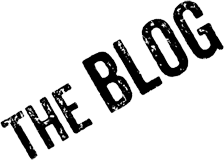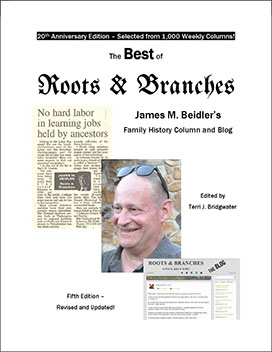Published April 20, 2025
| | Leave A ReplyIf you’re a week-in and week-out reader of “Roots & Branches,” you’ll remember the name Lisa Minardi.
Minardi’s the human dynamo who has turned Historic Trappe and its Center for Pennsylvania German Studies into a major repository and events center in the borough of Trappe in Montgomery County, Pennsylvania.
Minardi is the executive director of Historic Trappe as well as of the Lutheran archives in Philadelphia, and she’s an acknowledged expert on material culture, particularly furniture and the decorative folk art called fraktur, with the world-renowned Winterthur Museum on her resume.
She has helped build Historic Trappe’s portfolio into four historic sites in the borough: the Speaker’s House (home of Frederick Muhlenberg), Muhlenberg House, Dewees Tavern, and the Muhlenberg Parsonage.
Last week, she presented “Fraktur A to Z” on her home turf, a two-hour workshop that included a fabulous behind-the-scenes show and tell from the fraktur collection that she’s built up from the ground level since the founding of Historic Trappe.
I’ve had a more or less casual interest in fraktur since obtaining several decorated baptismal certificates of my direct-line ancestors some years ago, but the “A to Z” program seemed to be a good opportunity to take my knowledge of this functional folk art up a notch or two.
Minardi’s presentation didn’t disappoint. She included handouts on fraktur vocabulary and a debunking of some of the common myths about it, one of which is the notion that fraktur art moved in a steady evolution from being completely hand produced (text, art and coloring) to full printed except for in-fill. Like most everything, the real story is messier than that—printed forms beginning already in the 18th century and handwritten ones persisting well into the 19th century (and even the 20th century in the case of some artists).
Other items I learned (or had my learning reinforced about) during the workshop:
- Fraktur did not spring full blown in Pennsylvania; there were a couple of predecessor forms in German-speaking Europe, though these primarily revolved around the relationship between a baptismal sponsor and a child being baptized.
- In Pennsylvania, it’s thought that some 90 percent of the fraktur produced were birth and baptismal certificates, although there were also a tiny number of marriage certificates, as well as bookplates, handwriting samples, and house blessings.
- Most fraktur are unsigned and it can be a complicated process to attribute works to a particular artist, leading to names such as “The Cross-Legged Angel Artist.”
- As some fraktur have become valuable pieces of folk art, a market for forgeries has also emerged.
- Several Hessian soldiers who stayed in Pennsylvania became fraktur artists.
- Some of the fanciful birds decorating many fraktur could have been taken partially from life, since the now-extinct Carolina parakeet once had range in Pennsylvania!

